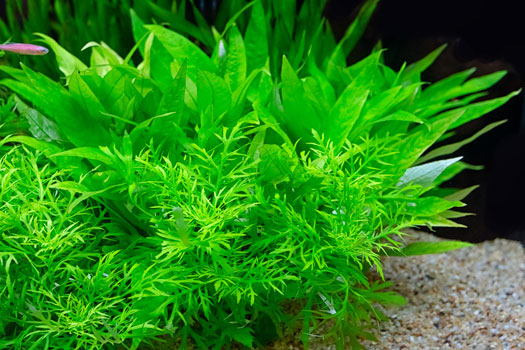- Your shopping cart is empty!
How Is Using CO2 in a Planted Aquarium Beneficial?

When we craft aquariums, we seek to replicate a healthy ecosystem, usually similar to a pond, sea, or lake, in an indoor enclosure inside of a business or home. Freshwater planted aquariums in particular wrestle with the constraints of local tap water, limited space, and limited water and air flow to still create an ecologically balanced aquarium in a very natural way. Some use additions like artistic wood and rock to create a thriving environment that’s close to self-sustaining. Still, we perform water and filter changes and provide artificial lighting. And freshwater planted tanks, unable to reach the amount needed independently, require CO2 to grow and have the color they do in the pictures of healthy plants.
Every plant uses CO2 (carbon dioxide) to create its own food. In the wild, CO2 is given off during respiration by animals: humans, fish, mammals, amphibians, and reptiles alike. Plants then use CO2 to photosynthesize, wherein CO2 and H20 (water) are taken in, sunlight provides energy for the chemical shift, and C6H12O6 and O2 are produced. The O2 emerges as oxygen, similar to our process of “exhaling,” so animals and plants can benefit each other. C6H12O6 is also known as glucose, which plants use as food to fuel their life and growth.
If CO2 is given off by humans, fish, and any other animals in the building or the tank, why is CO2 injection required for a planted aquarium? Though plants receive some CO2 from their natural surroundings, they don’t receive enough. Tap water tends to reach equilibrium with air at 6 or 7 ppm CO2. An aquarium can’t sustain dense populations of fish and have those fish remain healthy, but in the wild, each plant is interconnected with a vast space filled with schools of fish moving in and out of the area. These lakes, ponds, rivers, and seas all see drastically higher numbers of CO2 production—sometimes concentrations of 10 ppm, and sometimes even over 40, are cited as being seen in the wild.
But won’t CO2 suffocate fish? When you have to carefully monitor nitrites, nitrates, ammonia, pH, and phosphates, it makes sense to worry about introducing a new gas. However, that’s a common misconception: the amount of CO2 in the water won’t prevent fish from consuming the oxygen present until it reaches high, toxic levels of 30+ ppm. And while the condition of your individual tank should always be monitored, thriving plant life will produce higher concentrations of oxygen to, in turn, keep your fish thriving.
Consider combining CO2 injection with improved lighting to further bolster the growth and beauty of your aquarium plants. Remember the most crucial ingredients of photosynthesis: water and CO2 can be all around, and both will provide the tools your plants need to thrive, but the more energy your plants are provided for photosynthesis, the more they can effectively use those ingredients. If CO2 gas injection is out of your realm of possibilities at present, the next best alternative is using a liquid “carbon source” like Excel from Seachem:
https://www.aquaticwarehouse.com/index.php?route=product/search&search=excel&category_id=0
This works extremely well by adding ½ a “cap” of Excel every day when your lights go on, tricking your plants into thinking they’re getting CO2 similar to the gas CO2. We do this every day because of how fast (8 hours) the Excel dissipates in an aquarium.
To keep your plants lush and their stems sturdy, provide a balanced ecosystem, and help all parts of your aquarium thrive, it’s important to understand CO2 injection is just as necessary to maintaining your plants as it is providing food to your fish.
If you’re looking for a trusted aquarium supplier to provide everything you need to properly maintain a freshwater planted aquarium, reach out to Aquatic Warehouse. Give one of our friendly experts a call today at 858-467-9297.
